We will be undertaking a 13-day field project off Hawai‘i Island starting April 16, 2015. This project is funded by several grants, including the NOAA Fisheries Bycatch Reduction Engineering Program (BREP) and the Pacific Islands Fisheries Science Center, to work specifically with false killer whales, as well as the Office of Naval Research, to work with dwarf sperm whales. Our primary goals for the field effort are to find and deploy LIMPET satellite tags on false killer whales and dwarf sperm whales. Like all of our field projects though, we will work with most species we encounter. We have funding from Dolphin Quest for LIMPET satellite tags that we hope to deploy on some of the rarer species of odontocetes in Hawaiian waters (e.g., melon-headed whales, killer whales, sperm whales) to track their movements and behavior.
The research crew for this project will include Daniel Webster, Annie Gorgone, Sarah Ashworth and Robin Baird, all from Cascadia, as well as a number of volunteers.
If you want some background information on our work in Hawai‘i we published a paper on our first 13 years of surveys and a pdf is available here
End of project update
Over the 13-day project we were able to make it on the water 12 days, and covered 1,681 km of trackline in about 98 hours on effort. We had 43 encounters with nine different species, took 29,489 photos, and obtained movement data from three different species, two of which we’d never tagged before in Hawai‘i. Overall a very successful project.
April 26, 2015 update
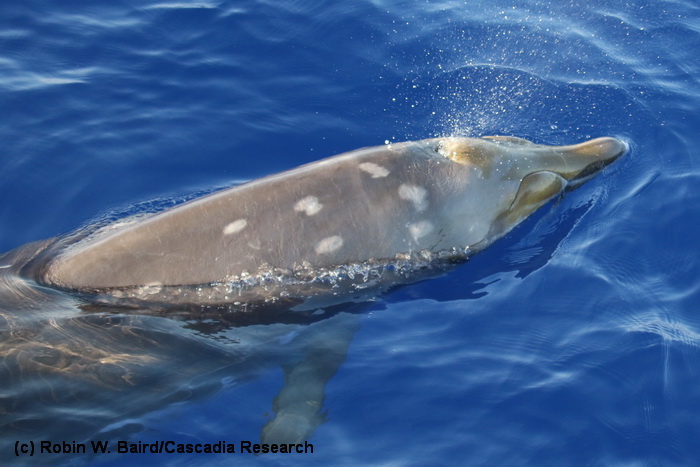
Today we ventured far offshore of Kona and had five encounters with five different species. Our first encounter of the day was a group of four Blainville’s beaked whales, in about 4,000 m depth and ~22 km from shore. There is a resident population of Blainville’s off the island, but we suspect these individuals are part of the open-ocean population, based on the depth and distance from shore. We were able to get identification photos of all four individuals to compare to our photo-ID catalog, and deployed a satellite tag on one of the individuals, so are hoping to get movement data from the group. This individual has a strongly arched lower jaw, suggesting it is a sub-adult male. Photo (c) Robin W. Baird
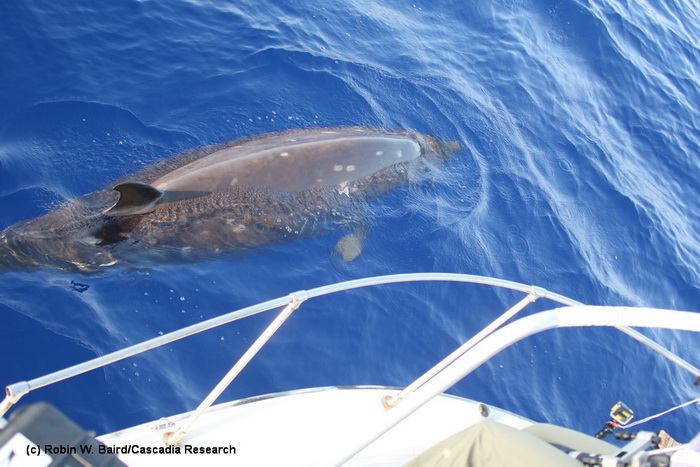
We first spotted the group about 500 m away but they dove shortly after we saw them. Once we got to the location they went down we stopped and waited, and three minutes later one of the individuals came up right next to the boat, surfacing slowly and bobbing next to the boat for a while – we’ve seen this type of curious behavior by Blainville’s beaked whales a few times in the past. Photo (c) Robin W. Baird. More information on Blainville’s beaked whales on our beaked whale page
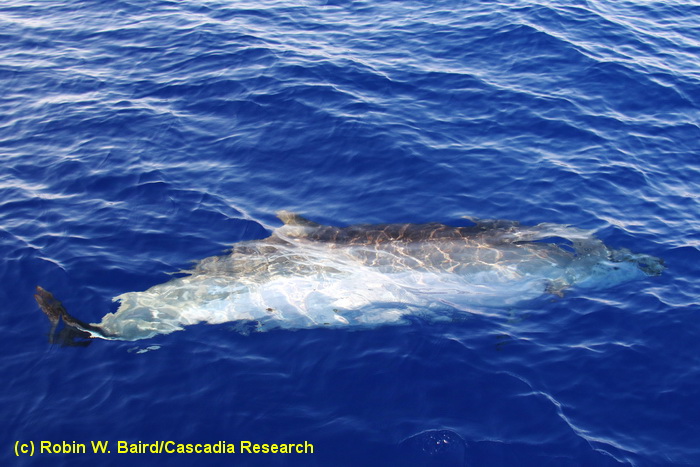
Our curious beaked whale rolling on its side next to the boat – photo (c) Robin W. Baird
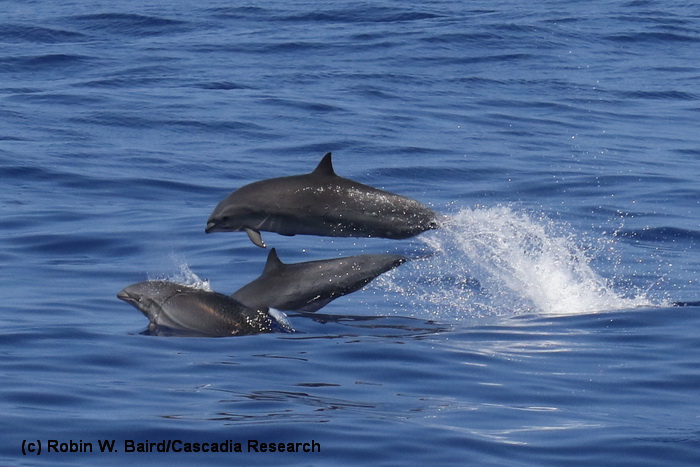
We also encountered two other offshore species, Fraser’s dolphins (photo above) and striped dolphins – this was only our fourth encounter with Fraser’s dolphins in Hawai‘i. Photo (c) Robin W. Baird
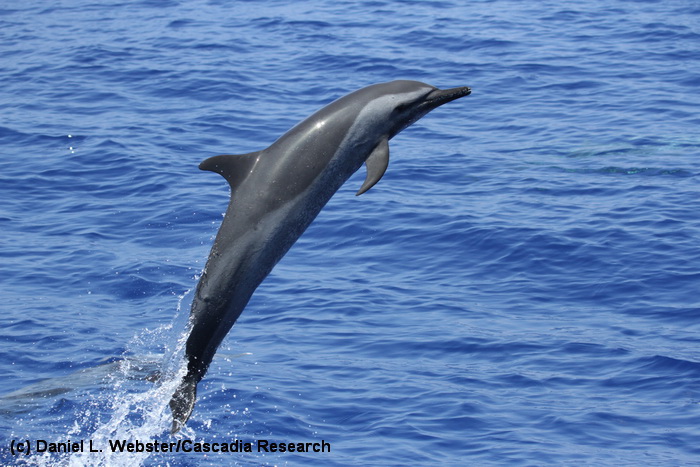
Pantropical spotted dolphin leaping, April 26, 2015. Photo (c) Daniel L. Webster.
April 25, 2015 update
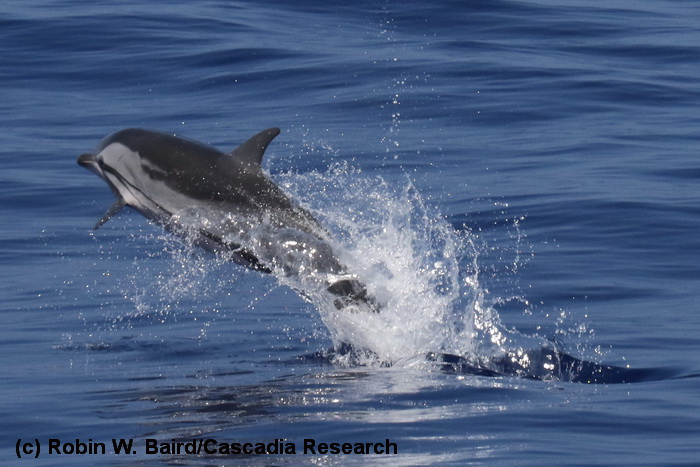
Today off Kona we encountered our 9th species of odontocete for the trip, a group of about 45 striped dolphins. Out of the 18 species of odontocetes we’ve seen in Hawaii, striped dolphins rank 12th on the list in terms of how often we encounter them. Striped dolphins in Hawaii typically avoid boats and are found in deep water far offshore, so are not often seen, despite their abundance in offshore waters. Photo (c) Robin W. Baird
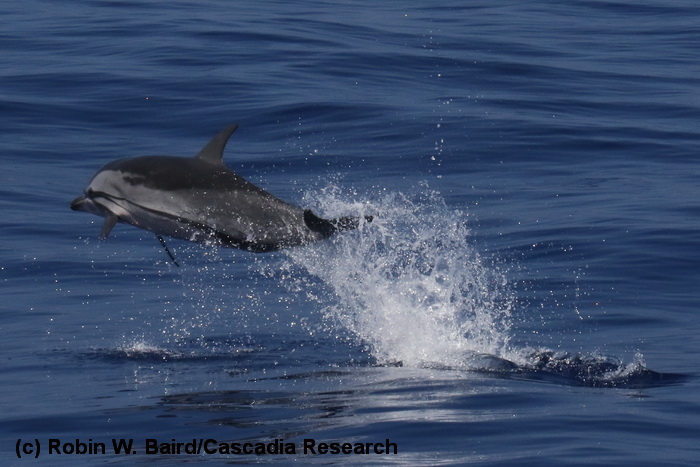
Striped dolphin leaping, April 25, 2015. Photo (c) Robin W. Baird
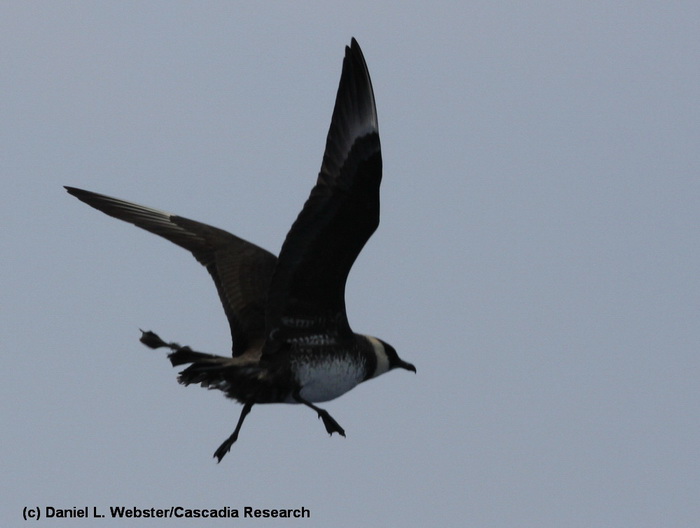
We record all seabird sightings when on the water – on April 24th we had a good view of a Pomarine Jaeger – photo (c) Daniel L. Webster
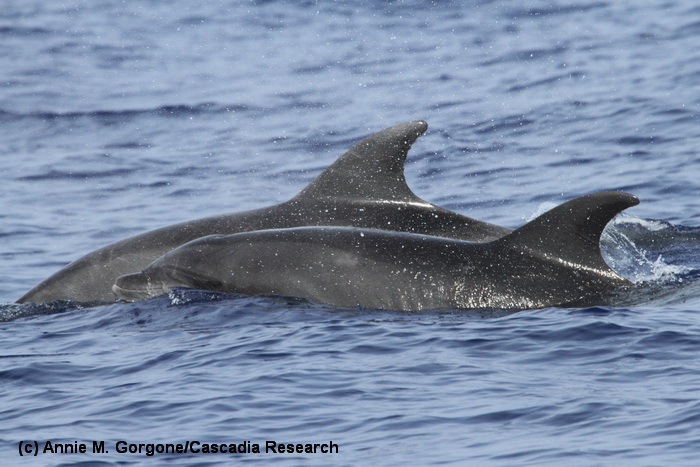
On April 23rd we encountered our 8th species of odontocete for the trip – bottlenose dolphins. There is a resident population of bottlenose dolphins around the island of Hawai‘i and we recognized several of the individuals we encountered. Photo (c) Annie M. Gorgone
April 21, 2015 update
Today was a good day on the water.
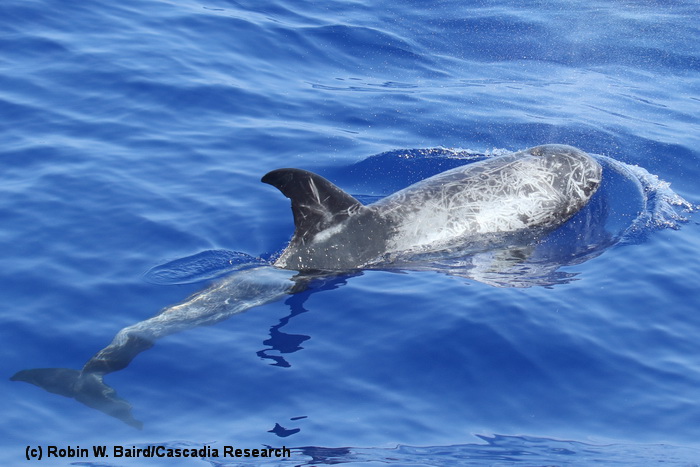
We encountered Risso’s dolphins today for the 10th time in Hawaiian waters, a group of eight individuals. Risso’s in Hawai‘i tend to be found in very deep water – the group today was in 4,000 m depth. We were able to get identification photos of most of the individuals present, although we don’t yet have a photo-identification catalog for this species, as they are difficult to approach and get good photos. This was our best encounter yet, and we were able to deploy a satellite tag – the first time we’ve tagged a Risso’s dolphin in Hawai‘i. Photo (c) Robin W. Baird

Risso’s dolphin, April 21, 2015. Photo (c) Robin W. Baird
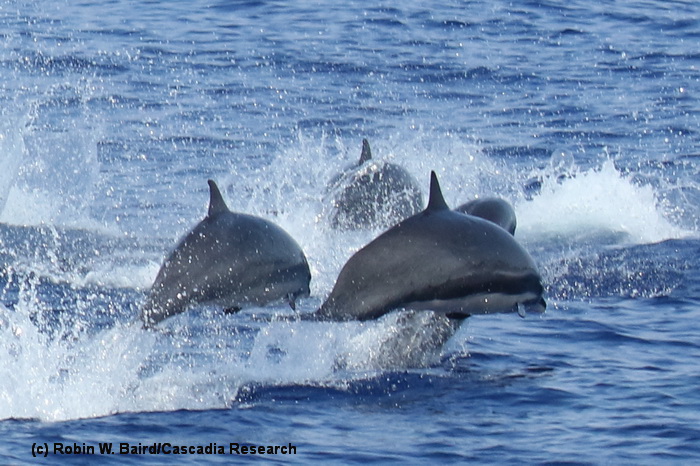
We also encountered a group of Fraser’s dolphins, only our third sighting of this species in Hawaiian waters. Fraser’s dolphins were first documented in Hawai‘i in 2002, and despite being seen so infrequently, may be one of the most common species of cetacean in Hawaiian waters, found primarily in large groups in offshore waters. They are not commonly identified off the main Hawaiian Islands as they are found both in offshore waters and tend to avoid boats.
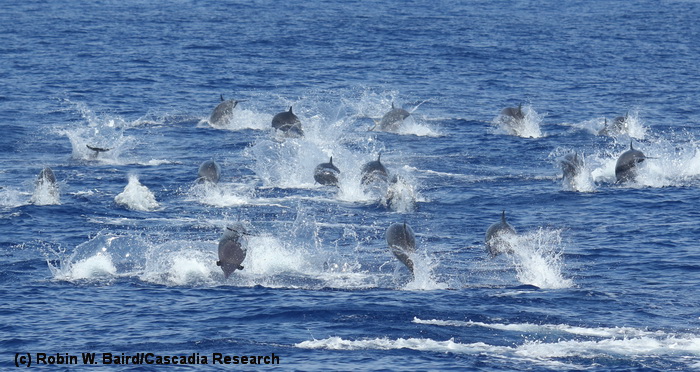
A typical view of a group of Fraser’s dolphins in Hawaii, as they avoid our research vessel. Photo (c) Robin W. Baird
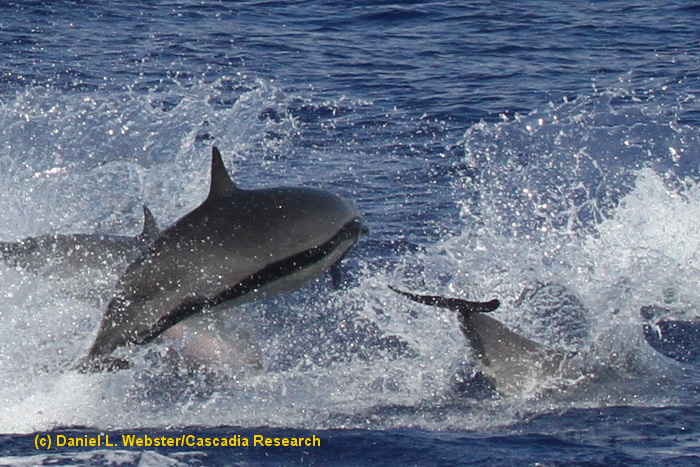
Fraser’s dolphins are sexually dimorphic – adult males have bold dark stripes along the side. Photo (c) Daniel L. Webster
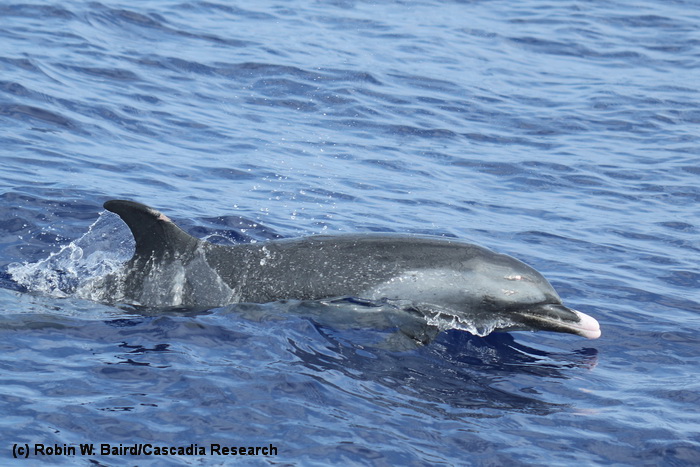
We also encountered a group of about 90 pantropical spotted dolphins, were able to photo-identify many of the individuals present, and were able to deploy a LIMPET satellite tag, to track movements of the group. This is the first time we’ve (or anyone?) has remotely-deployed a satellite tag on a pantropical spotted dolphin, and we are excited to learn more about their movements around the island. Photo (c) Robin W. Baird
April 18, 2015 update
Today we encountered our fifth species for the trip, a group of five Blainville’s beaked whales.
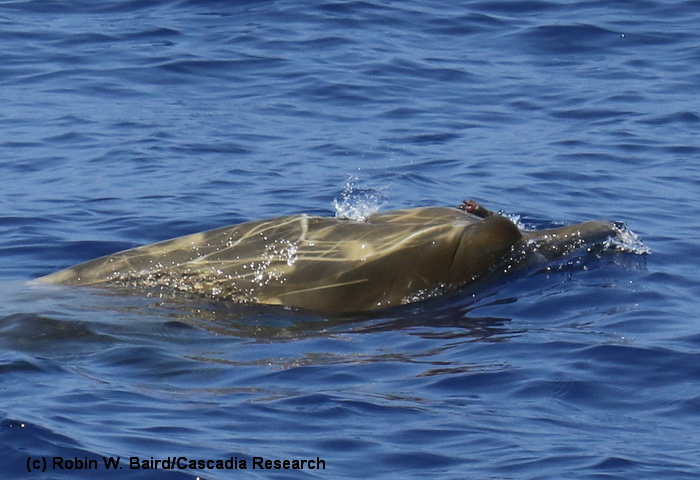
The group included one adult male, three adult females and a juvenile – this photo shows the head of the adult male, with the very high arched lower jaws. This male has erupted teeth, but they only extend a bit above the gumline (the left erupted tooth is not really visible in this photo as it is covered with stalked barnacles). Photo (c) Robin W. Baird
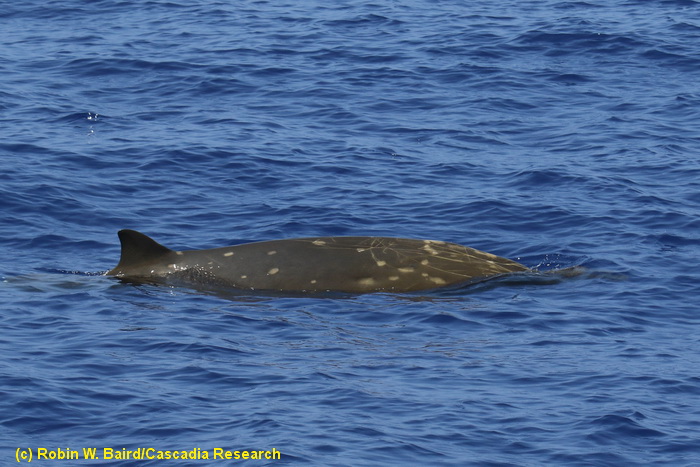
The adult male Blainville’s beaked whale – the linear scars on the front half of the body are from fighting with other males, while the white oval scars are healed wounds from cookie-cutter shark bites. Photo (c) Robin W. Baird
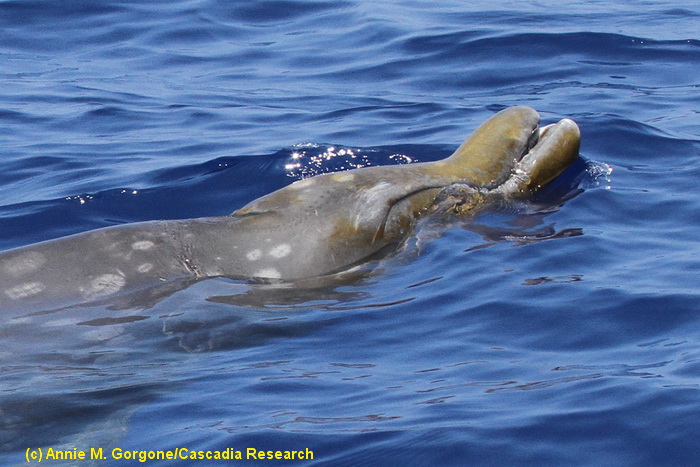
One of the adult females in the group has a slightly deformed rostrum, so the tip of the jaw doesn’t close. In this photo you can also see a series of small dark dots running back along the top of her head above and behind the mouth – those are from a squid tentacle, the signs of its last effort to escape before being eaten. Photo (c) Annie M. Gorgone
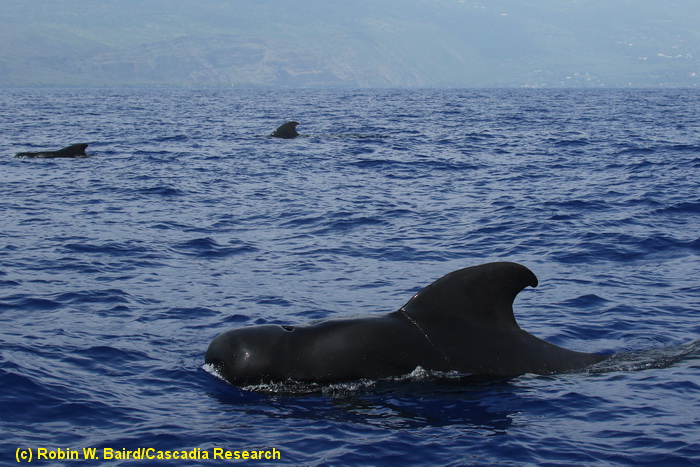
We also encountered four groups of short-finned pilot whales and were able to photo-identify most of the individuals present – this photo shows an adult male in the foreground, wiht the flattened forehead and large dorsal fin. Photo (c) Robin W. Baird
April 17, 2015 update
In our first two days on the water we encountered four different species of odontocetes – rough-toothed dolphins, short-finned pilot whales, pantropical spotted dolphins and spinner dolphins. Our first sighting this morning was a large and dispersed group of pilot whales, and we were able to photo-identify most of the individuals and collect breath samples from three individuals, for a study of stress hormones being undertaken by Kristi West at Hawai’i Pacific University.
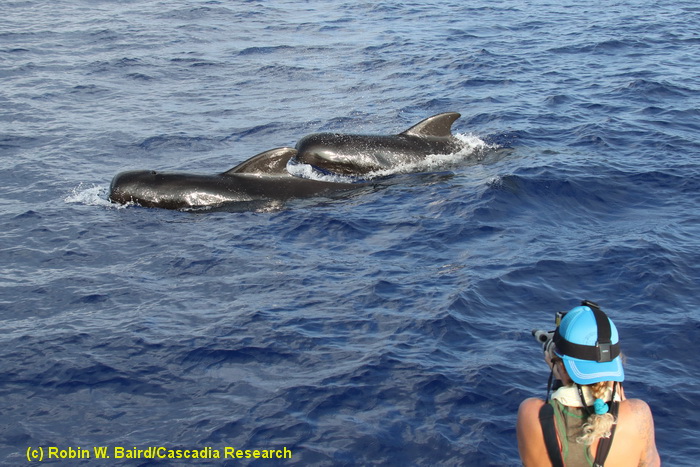
Taking photos of short-finned pilot whales – the camera Kimberly Wood is using has a laser photogrammetry system that projects two green dots exactly 15 cm apart on the body or dorsal fin of the whale, so that we can use these known distances to obtain measurements of the blowhole and front part of the body. Kimberly also has a GoPro around her head to capture video of the whales. (c) Robin W. Baird 2015
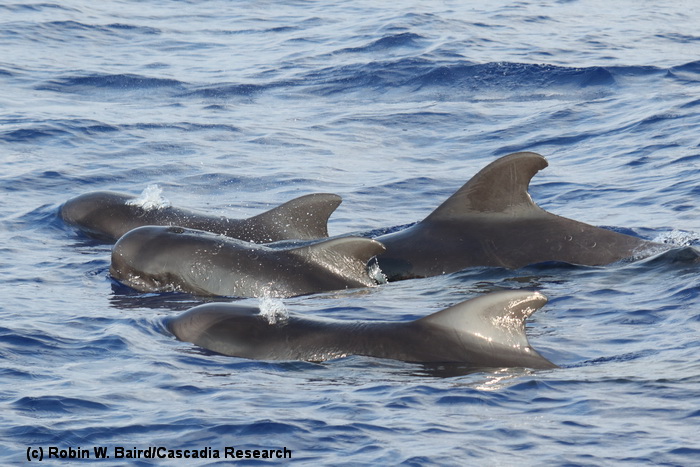
Short-finned pilot whales, April 17, 2015 (c) Robin W. Baird 2015
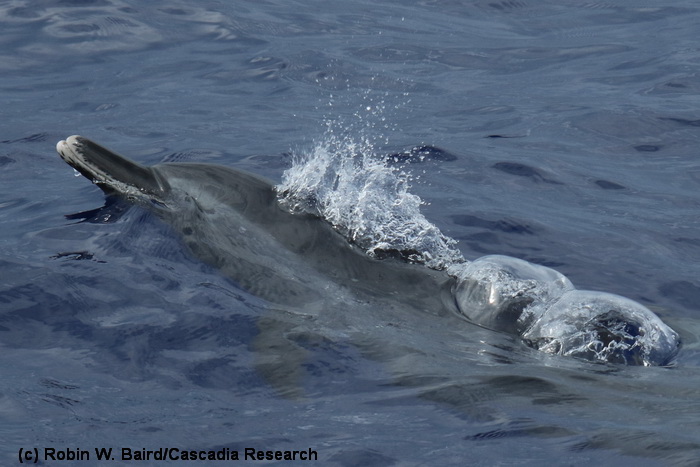
We also found a group of pantropical spotted dolphins and photographed many of the individuals present – April 17, 2015 (c) Robin W. Baird 2015
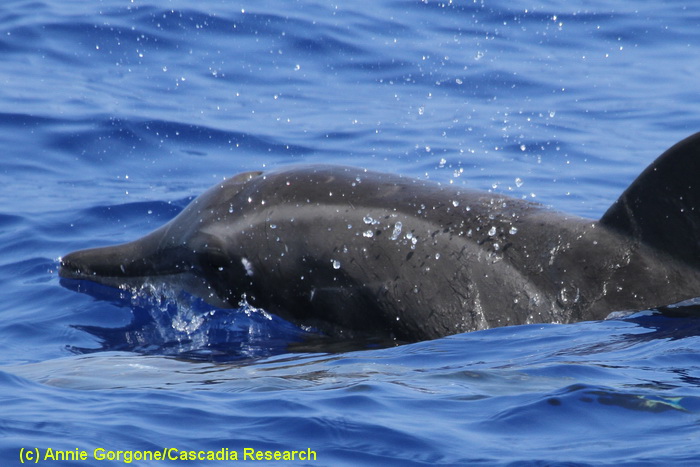
Rough-toothed dolphin surfacing, April 17, 2015 – our third species for the day – (c) Annie M. Gorgone
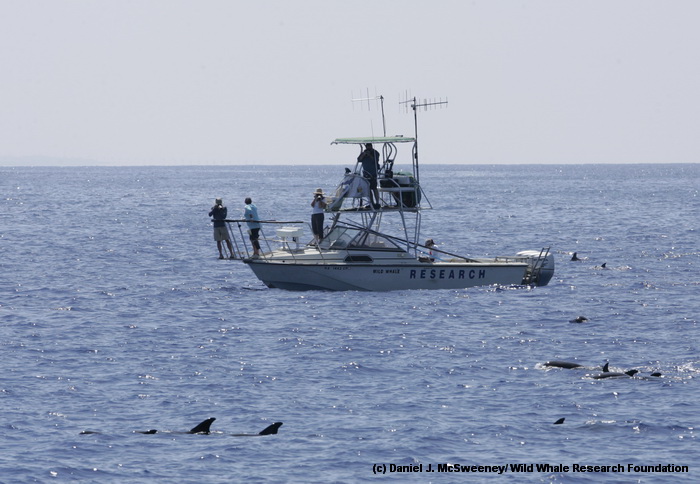
The R/V Wild Whale, a 27′ Boston Whaler, our primary research vessel, with a group of melon-headed whales off Kona, October 19, 2011. Photo (c) Dan McSweeney.
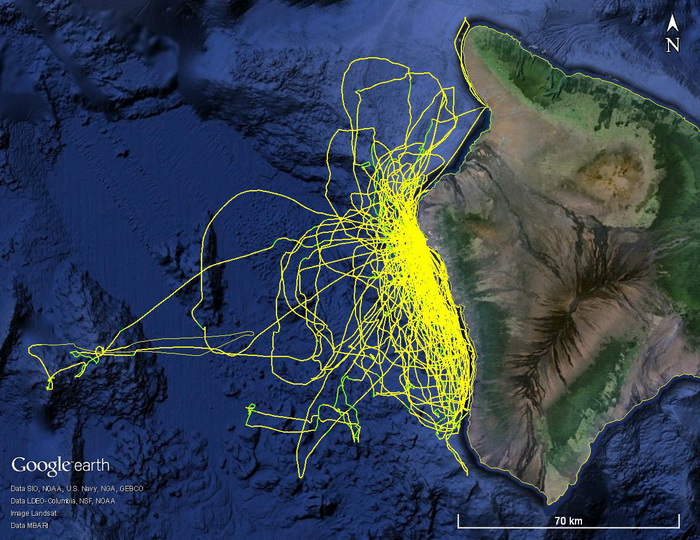
This map shows all our previous effort off the island of Hawai‘i during the month of April – we’ve worked off Kona in April in a number of different years (2010, 2009, 2008, 2002).
All photos are copyrighted and should not be used without permission (contact Robin Baird at rwbaird (at) cascadiaresearch.org for permission).
Like us on Facebook page if you want to receive notices of when information is posted and updates on other Cascadia projects.